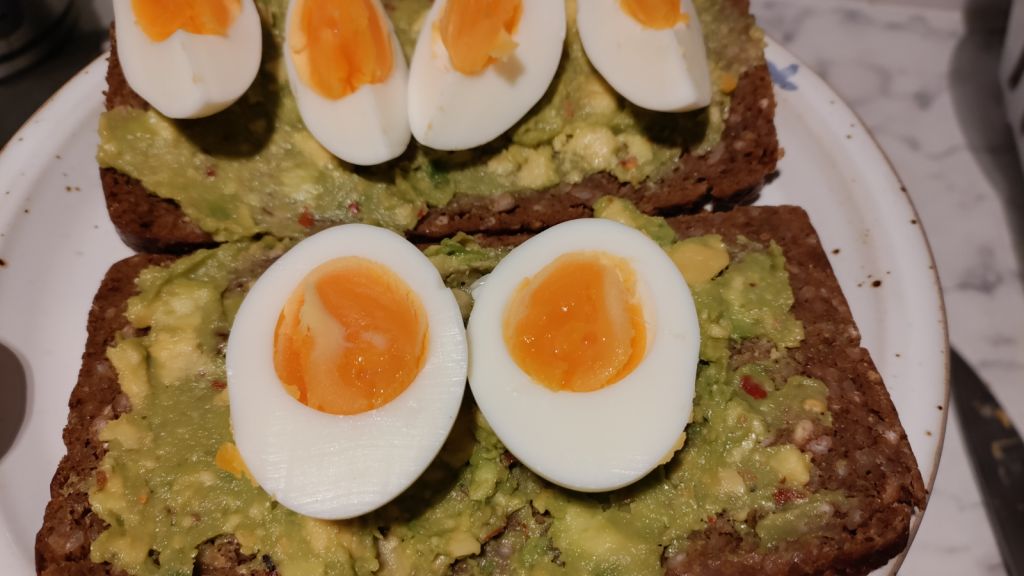 Jammy eggs on avocado rye
Jammy eggs on avocado ryeIt takes me a while to find a go-to recipe, but once I’ve landed on one I know works, I’ll hold onto it for dear life.
For instance, I’ll never stop chilling my par-boiled spuds before roasting them after seeing how crunchy and fluffy they become.
And though it might sound counterintuitive, I’ve found that the best brownie recipes never include melted chocolate mixed into the batter ― cocoa-only bases have given me the fudgiest, gooey-est results.
But it took until last week for me to finally find a trick that delivered perfectly jammy boiled eggs every time.
 Cooled jammy eggs on avocado rye
Cooled jammy eggs on avocado ryeWhat’s the trick?
Timing matters, but I’ve found that the cincher is an ice bath.
Some sites suggested I put the eggs in for a six-and-a-half-minute simmer after the water in the pan reached a rolling boil; I felt this would make a runny, rather than jammy, egg.
Seeing as I wanted to cool the eggs for sandwiches, I felt that’d be a bit too risky.
Instead, I went for Minimalist Bakers’ seven-and-a-half-minute suggestion. This has proven to give me the most consistent fudgey, but not gooey, yolks.
Additionally, Gordon Ramsay says he likes to put his soft-boiled eggs in cold water after they’ve finished boiling because they keep cooking after you remove them from the heat otherwise.
The chef recommends cracking the eggs at the base before adding them to the water and blowing into it to make it cool faster.
Another way to get a similar result, though, is to simply make the egg bath cooler with ice ― that’s what I did with mine, and it really stalled the cooking process, ensuring perfectly jammy middles and cooked whites.
Minimalist Baker recommends leaving them in their chilly home for three minutes. Mine were in closer to five, but again, I was planning to cool them anyway.
 Eggs in an ice bath next to peeled boiled eggs (most of the ice in the bath had melted by the time I took the picture!)
Eggs in an ice bath next to peeled boiled eggs (most of the ice in the bath had melted by the time I took the picture!)Any other tips?
Some cooks recommend using ice only for the egg bath, with no cold water. This may make them far easier to peel, but might also cause them to crack.
Additionally, it might not be suitable if you don’t have an American-style fridge with an ice dispenser (or if, like me, your freezer is one measly shelf on top of your fridge).
I do love food writer and TV host Christine Fiorentino’s trick though ― if you’ve got any annoying shell shards on your egg, simply rinse its surface under the tap to banish them.


